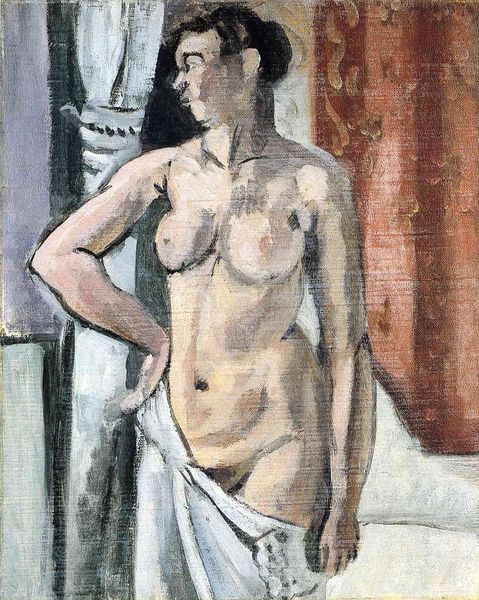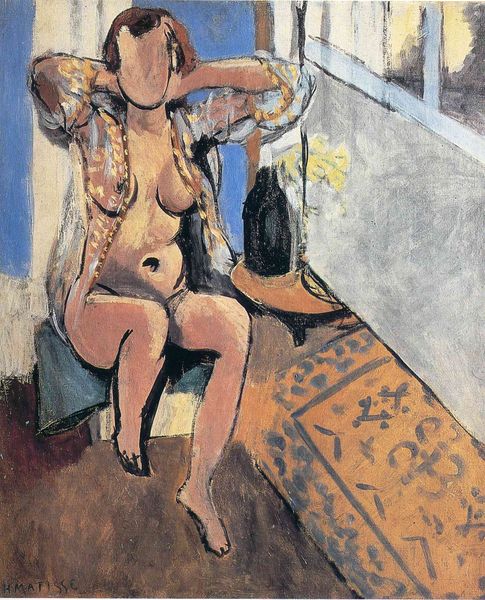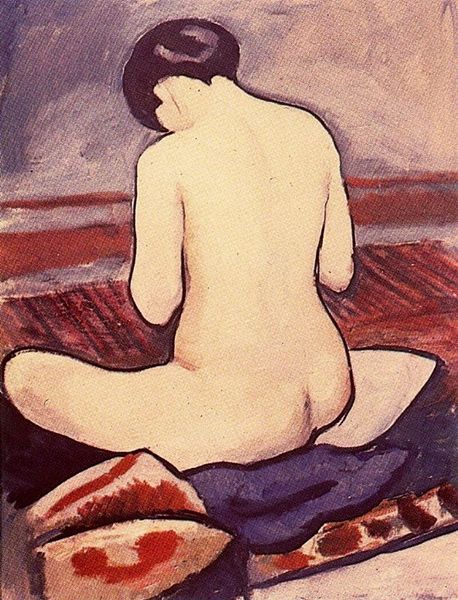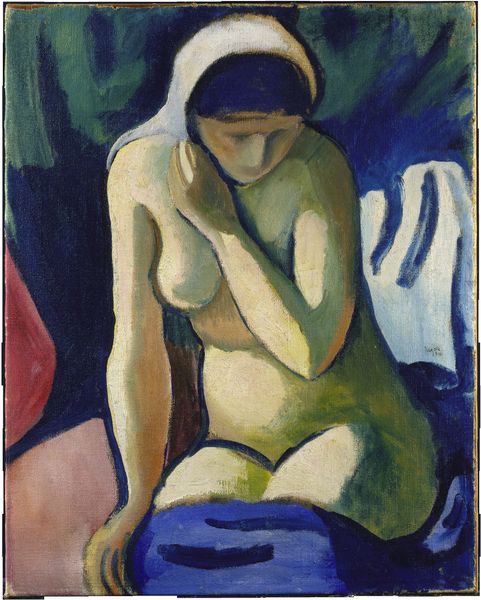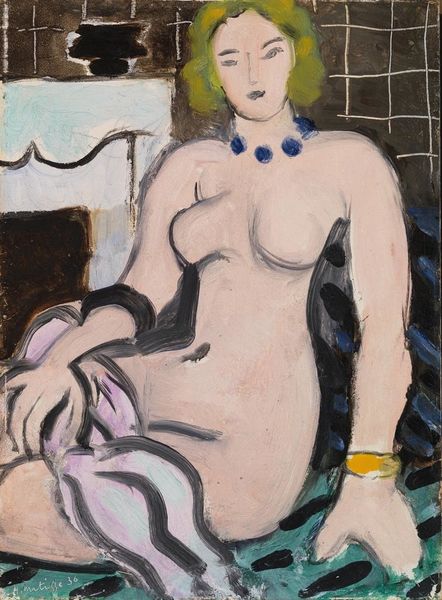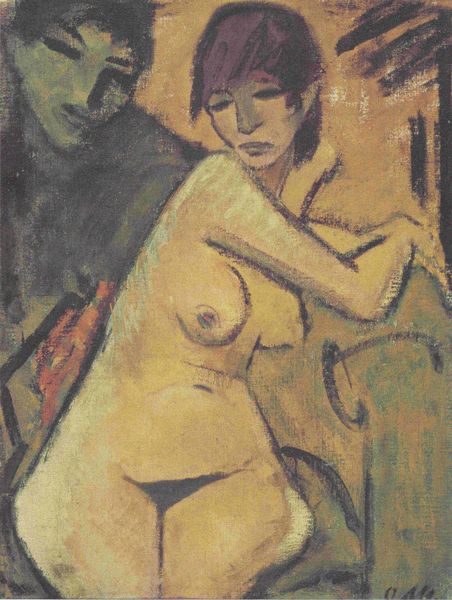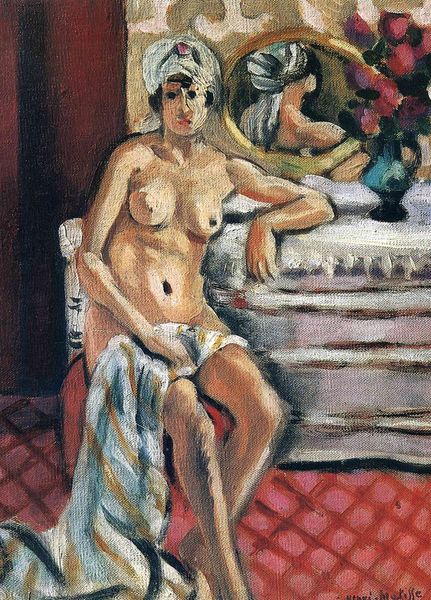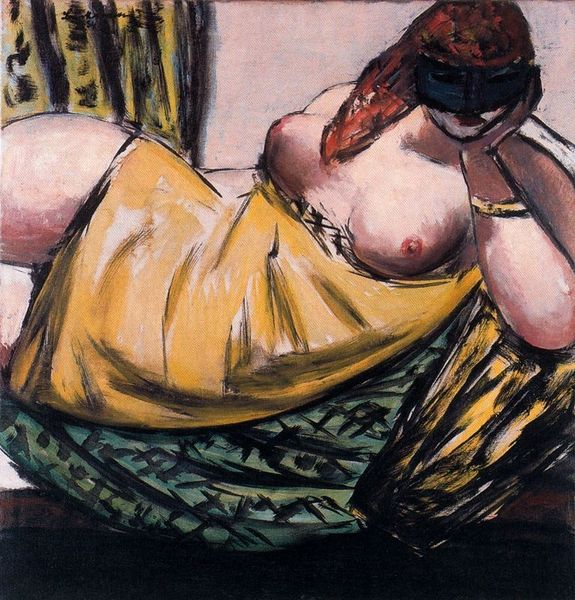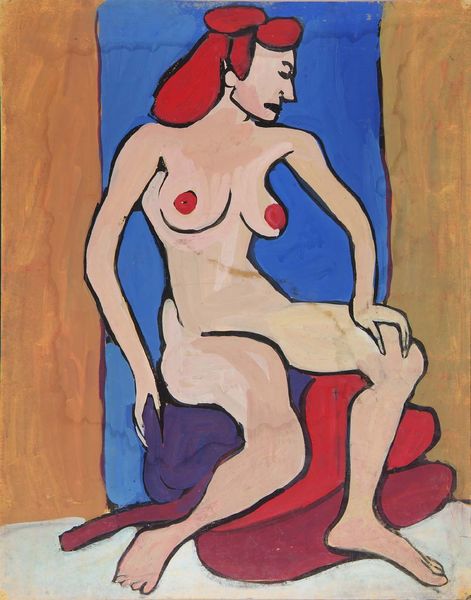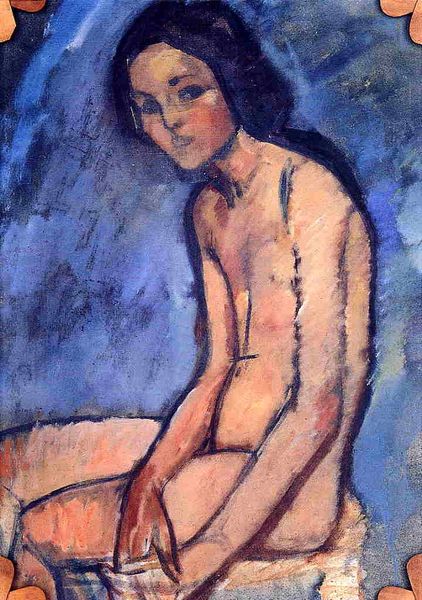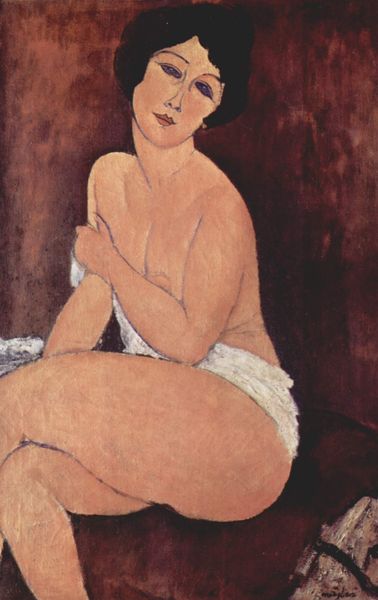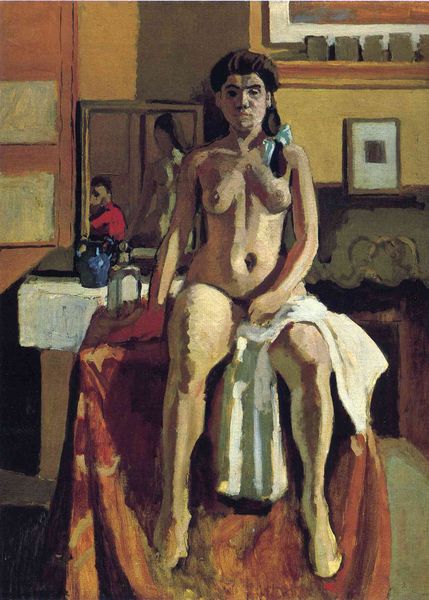
Copyright: Public domain US
Editor: Henri Matisse's "Nude's Back," painted in 1918 using oil paints and impasto technique, strikes me as both intimate and strangely distant. What do you see in this piece that shapes your understanding? Curator: This work offers a fascinating entry point for discussing the male gaze within art history, and Matisse's representation of the female body. What strikes me immediately is the absence of the model’s face. How does this contribute to the objectification, and perhaps dehumanization, of the subject? Editor: That's a perspective I hadn't considered. I was focused on the apparent informality of the pose, but the averted face definitely shifts the power dynamic. Is there also a statement being made about beauty standards, perhaps? Curator: Precisely. We should consider the broader societal context. Painted during a period of intense social change following the First World War, how might this image reflect shifting attitudes towards the body and its representation? Does it challenge or reinforce traditional ideals of femininity? And further, who is the audience here? Editor: It’s true that it could represent a pushback, as post-impressionism moved away from realism. Still, I wonder about whether he was aware of the nuances of representing a nude woman. I almost wish he had depicted the face, to connect with her. Curator: That's a vital desire, and one that resonates deeply in contemporary feminist discourse. The layers of representation invite constant questioning. Is this a moment of rebellion, or a perpetuation of established norms? What action can this work inspire today? Editor: I now realize how the artwork acts as a document of not just artistic expression, but also social context and gender dynamics. It requires a constant questioning of the narrative it presents. Curator: Exactly. Seeing "Nude's Back" is an invitation to challenge and contextualize.
Comments
No comments
Be the first to comment and join the conversation on the ultimate creative platform.
